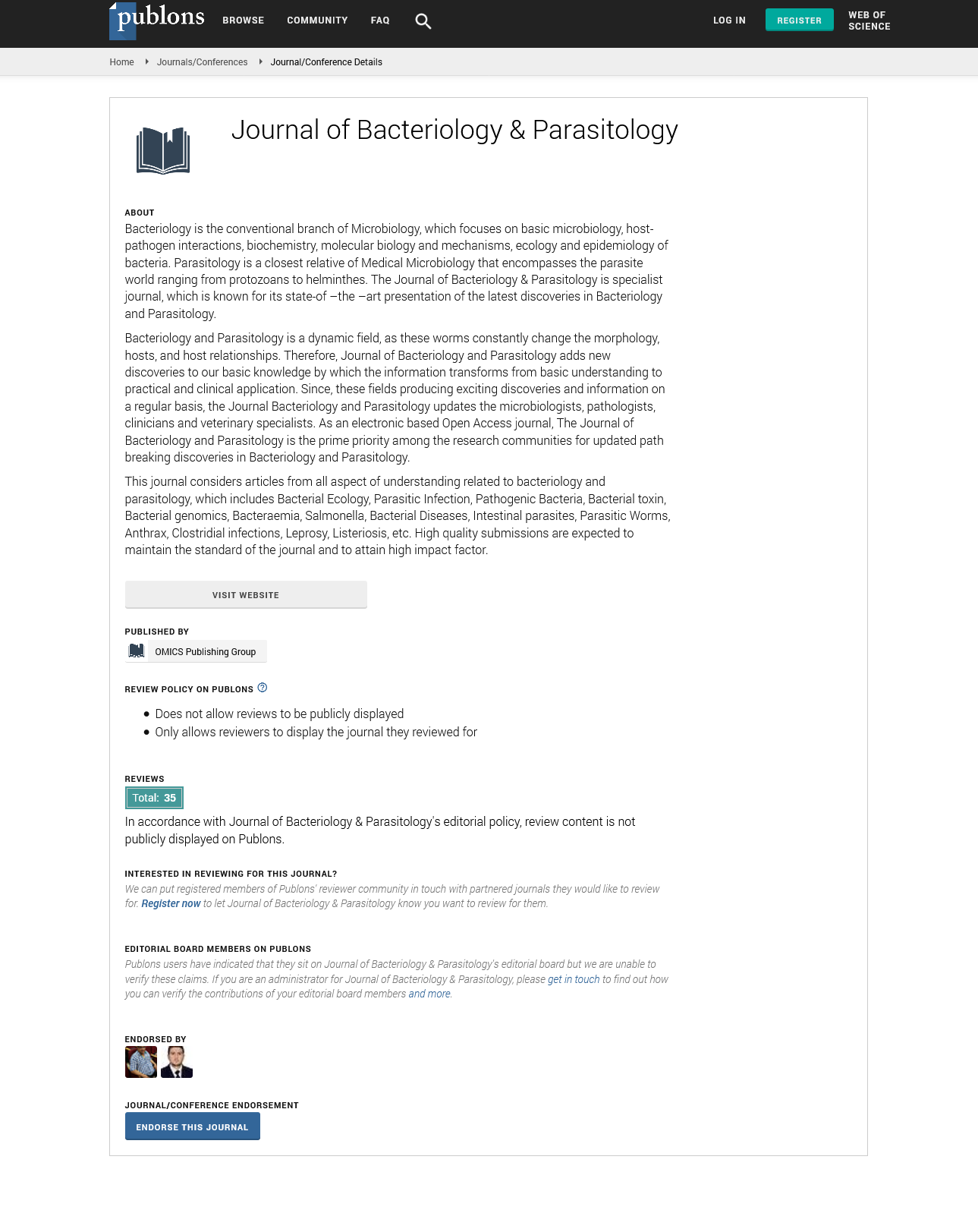Indexed In
- Open J Gate
- Genamics JournalSeek
- Academic Keys
- JournalTOCs
- ResearchBible
- Ulrich's Periodicals Directory
- Access to Global Online Research in Agriculture (AGORA)
- Electronic Journals Library
- RefSeek
- Hamdard University
- EBSCO A-Z
- OCLC- WorldCat
- SWB online catalog
- Virtual Library of Biology (vifabio)
- Publons
- MIAR
- Geneva Foundation for Medical Education and Research
- Euro Pub
- Google Scholar
Useful Links
Share This Page
Journal Flyer

Open Access Journals
- Agri and Aquaculture
- Biochemistry
- Bioinformatics & Systems Biology
- Business & Management
- Chemistry
- Clinical Sciences
- Engineering
- Food & Nutrition
- General Science
- Genetics & Molecular Biology
- Immunology & Microbiology
- Medical Sciences
- Neuroscience & Psychology
- Nursing & Health Care
- Pharmaceutical Sciences
Profile of viral hepatitis in Saudi Arabia
3rd International Congress on Bacteriology and Infectious Diseases
August 04-06, 2015 Valencia, Spain
Abdullah Abdulrahman Bin Salamah
Scientific Tracks Abstracts: J Bacteriol Parasitol
Abstract:
The study was conducted to investigate the profile of hepatitis in Kingdom of Saudi Arabia and to determine which age
group hepatitis viruses most commonly infect. The epidemiology of viral hepatitis in Saudi Arabia has undergone major
changes, concurrent with major socio-economic developments over the last two to three decades. This disease represents
a major public health problem in Saudi Arabia resulting in the need for considerable healthcare resources. A retrospective
cross sectional analysis of the reported cases of viral hepatitis was conducted based on the reports of The Ministry of Health
in Saudi Arabia about Hepatitis A, B and C infections in all regions from the period of January 2006 to December 2010. The
study demonstrated that incidence of viral Hepatitis is decreasing except for Hepatitis B that showed minimal increase of
hepatitis A, B and C, Hepatitis B virus (HBV) was the most predominant type accounting for (53%) of the cases followed
by Hepatitis C virus (HCV) (30%) and HAV (17%). HAV infection predominates in children (5–14 years) with 60% of viral
hepatitis cases, HBV in young adults (15–44 years) with 69% of viral hepatitis cases and HCV in older adults (>45 years) with
59% of viral hepatitis cases. Despite significant changes in the prevalence of viral hepatitis A, B and C, it remains a major public
health problem in Saudi Arabia. However it showed a significant decline in the last two decades that could be attributed to the
vaccination programs and the improved health facilities. Further researches are needed to identify the risk factors making a
specific age group or a specific region in Saudi Arabia targeted for a specific type of hepatitis viruses.
Biography :
Abdullah Abdulrahman Bin Salamah currently a Senior Medical Student at King Saud University, Riyadh, Saudi Arabia.

